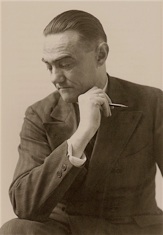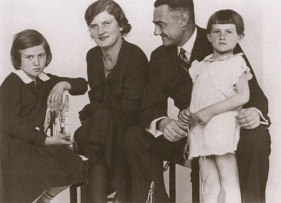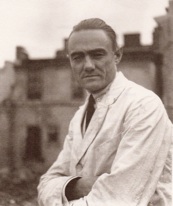Biography

The painter and graphic artist Franz August Sedlacek is one of the most important Austrian artists of the interwar period. He was born on January 21, 1891 in Breslau/Wroclaw but grew up in Linz where the family moved to in 1897. Even as a young school boy Sedlacek was creating humorous drawings and cartoons - his path was set from the very beginning.
In 1911 Sedlacek went to Vienna to study chemistry at the Technical University. A self-taught painter, he continued his art and by 1913 founded MAERZ, a Linz artist’ association together with Clement and Franz Brosch, Anton Lutz, Hans Pollack and Heinz Bitzan. Sedlacek’s university studies were interrupted by World War I. He was sent to Galicia and the Isonzo Front.
After his early years as a graphic artist and caricaturist, in the 1920’s Sedlacek concentrated on painting in oil. In 1920 he participated in a group exhibition at the 57th Exhibition of the Vienna Secession. In the same decade he began his long career as a curator at the Technical Museum Vienna and started a family: he married Maria Albrecht in 1925 and 1928 their two daughters were born.

Exhibitions and important contacts followed: he participated in the Austrian Art Exhibition 1900-1924 at the Vienna Künstlerhaus (1924); became a full member of the Vienna Secession (1927); won a gold medal for painting at the World Exhibition, Barcelona (1929); and, together with Herbert Ploberger and Paul Ikrath, participates in the exhibition Romanticism and New Objectivity in Upper Austria in the Upper Austrian Museum in Linz. He began an important friendship with Herbert Reyl-Hanisch who in 1930, painted a well-known portrait of Sedlacek’s wife.
In the 1930s Sedlacek was included in an exhibit of contemporary Austrian art at the Museum of Modern Art in New York and he was three times awarded the Austrian State Prize for painting (1933, 1935, and 1937). Sedlacek’s surreal imagery, full of wonderfully bizarre and grotesque landscapes, is closely related to the movements of the Neue Sachlichkeit and Neuromanik. He had, by then, become one of the most internationally renowned Austrian painters of the interwar period.

In 1937 Sedlacek was promoted to Deputy Director of the Technical Museum. The demands of the position left little time to make art and Sedlacek’s productivity as an artist was left to his leisure time. However, he enjoyed a second American exhibit in at the Carnegie International Exhibition of Paintings, Pittsburgh (1938) and was made is a member of the Vienna Künstlerhaus after the dissolution of Secession.
During World War II, as a First Lieutenant and later Captain of the German Army, Sedlacek served in Stalingrad, Norway and Poland. The director of the Technical Museum attempted but failed to get Sedlacek released from military service toward the end of the war. In January 1945 Franz Sedlacek was declared missing on the Eastern Front in Thorn/Torun. It was not until 1972 that he was officially declared dead.
While recognized during his lifetime, Sedlacek's work was only rediscovered in the 1980s. Since then, the "chemist of the imagination" has once again regained his status as one of the most important Austrian painters of his time.
